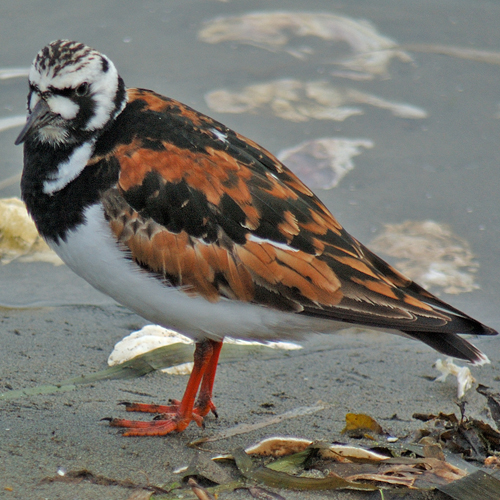General Description
The Ruddy Turnstone is a compact shorebird with distinctive plumages and bright orange legs. It has a short, wedge-shaped bill that it uses in its unique foraging style. The male in breeding plumage has a rufous back, striped with black and white. The belly is white, and the head is boldly patterned in black and white. A bold, black 'U' in front of the wing is a prominent feature on the male in breeding plumage, and is visible, although less so, in all other plumages. In flight, the Ruddy Turnstone shows white at the base of the tail, on the wings, and on the back. Females and males in non-breeding plumage are duller than breeding males, their backs mottled gray-brown rather than rufous.
Ruddy Turnstone's are Uncommon in Western Washington Mid July-Early August, Juv's Late August-Late September.Habitat
Ruddy Turnstones breed in the Arctic tundra. During migration and winter, they inhabit coastal areas with sandy or rocky shores, although they are most typically found on mudflats, especially those with rocks. In migration, they can be found inland in plowed fields.
Behavior
Ruddy Turnstones flock in small groups, larger in spring than fall, and often occur with Dunlins and Red Knots in the spring. Active foragers, turnstones are best known for their habit of turning over objects and eating the food underneath. They are quite strong and have been known to turn over rocks as big as their own heads. They also flip over seaweed, small sticks, and other objects in their search for food. When moving from place to place locally, Ruddy Turnstone flocks fly in tight groups. During migration, they fly in loose lines.

No comments:
Post a Comment